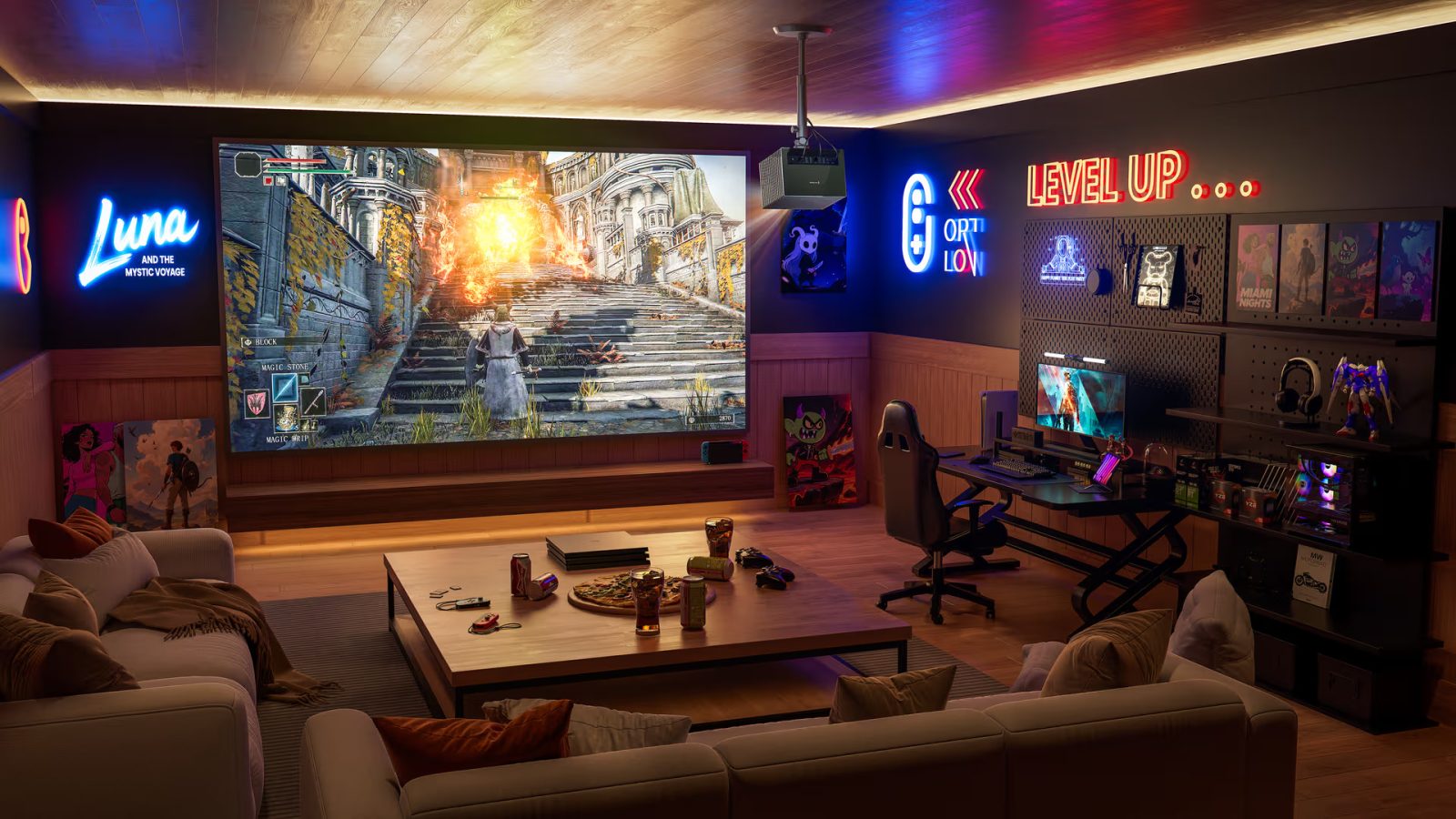High Dynamic Range (HDR) has become a staple of modern home entertainment, promising brighter highlights, deeper shadows, and a wider range of colors. But not all HDR is created equal. While HDR10 is the static metadata standard that most of us are familiar with, a more advanced form of HDR uses dynamic metadata, such as that found in Dolby Vision and HDR10+. These standards promise to take image quality to the next level by optimizing the picture on a scene-by-scene or even frame-by-frame basis.
This article will explore the core differences between static HDR10 and the more sophisticated dynamic metadata standards. We’ll then dive into a critical question: why is it so challenging to implement high-quality dynamic tone mapping on projectors compared to televisions? Finally, we will look at the future of HDR in projection systems and what we can expect as technology continues to evolve.
Static vs. Dynamic Metadata: The Core Distinction
To understand the challenge, we first need to understand the fundamental difference between these two types of HDR.
Static Metadata (HDR10)
HDR10 is an open standard that uses “static metadata.” This means that the metadata—which includes information about the content’s maximum brightness (MaxFALL) and maximum light level (MaxCLL)—is embedded at the beginning of the entire film or show. The display then uses this single set of instructions to tone map the entire piece of content.
This approach works well, but it has a key limitation. A bright, sunny scene will be tone mapped in the exact same way as a dark, moody scene. The display’s processor must make a single, universal compromise for the entire video, which can lead to washed-out blacks in dark scenes or clipped highlights in very bright ones.
Dynamic Metadata (Dolby Vision and HDR10+)
Dynamic metadata standards, such as Dolby Vision and HDR10+, are a different beast entirely. These standards encode metadata on a scene-by-scene or frame-by-frame basis. For every moment of the content, the display receives a new set of instructions. This allows the display to adjust its tone mapping in real-time, optimizing the image for that specific moment.
For example, a sudden explosion in an otherwise dark scene can be handled with precision, without negatively impacting the rest of the scene’s black levels. The result is a much more nuanced and impactful HDR experience, with better preservation of detail in both the brightest and darkest parts of the image.
Why Dynamic Tone Mapping is So Hard for Projectors
On a television, dynamic metadata works wonders. An advanced TV can intelligently adjust its local dimming zones and peak brightness on a frame-by-frame basis to precisely match the dynamic metadata. Projectors, however, face some unique and significant technical hurdles that make this process far more difficult.
1. A Singular Light Source vs. Local Dimming Zones
A high-end TV, particularly an OLED or Mini-LED model, can control the brightness of its pixels with extreme precision. Mini-LED TVs, for example, have thousands of individual local dimming zones that can be brightened or dimmed to match the content. This is the perfect companion for dynamic metadata. A projector, on the other hand, has a single, non-segmented light source that illuminates the entire image.
When a projector tries to display a bright object on a dark background (like stars in space), it cannot make the “black” areas of the screen darker. The black level is determined by the projector’s native contrast and the reflectivity of the screen. To make the bright stars appear brighter, the projector has to increase the overall light output for the entire image, which inevitably raises the black level and makes the dark background appear grayer. This is the core reason why projector blacks will never match those of a high-end TV.
2. The Challenge of Luminance and Tone Mapping
The primary function of tone mapping is to compress the massive brightness range of HDR content into the more limited brightness range of the display. A modern TV can hit peak brightness levels of over 1000 nits. Most projectors, even bright ones, typically peak at around 100 to 200 nits on a standard screen.
A projector trying to render a scene with a peak brightness of 4000 nits must perform an aggressive amount of compression. With static HDR10, the projector makes a single compromise. With dynamic metadata, the projector can adjust this compression on a scene-by-scene basis. However, because its maximum brightness is so low compared to the source material, the dynamic changes often have a more subtle effect than they would on a TV. It’s still an improvement, but the impact is less dramatic.
3. The Role of the Projector Screen and Environment
A TV is a self-contained system. The light source, display, and screen are all one unit, and the display’s processor knows exactly what it’s working with. A projector is different. The image is a result of the interaction between the projector, the screen, and the room environment. A dark room with a high-gain screen will have a completely different effective contrast and brightness than a bright room with a matte-white screen.
For dynamic metadata to work perfectly, the projector’s tone mapping would need to take into account these variables. A ceiling mount projector in a dark, dedicated theater will perform HDR vastly better than one in a living room with ambient light, even if they’re the same model.
The Future of Projector HDR
Despite these challenges, the future of HDR in projector systems is looking bright. Manufacturers are not giving up on dynamic metadata; instead, they are developing innovative solutions.
1. Advanced Dynamic Iris and Laser Dimming
Newer projectors, especially those with laser light sources, are using sophisticated dynamic iris and laser dimming technologies. These systems can rapidly adjust the light output on a frame-by-frame basis, providing a form of “local dimming” that mimics some of the benefits of a TV’s dimming zones. While still limited by the single light source, these systems can significantly improve contrast and black levels, making them better partners for dynamic metadata standards.
2. Smarter Processing and AI
The processing power inside projectors is increasing exponentially. Future 4K projector models will likely use advanced algorithms and even AI to analyze the incoming dynamic metadata and the content itself. This will allow them to perform more intelligent tone mapping, anticipating scene changes and optimizing the light output to get the most out of the limited brightness range.
While projectors may never match the absolute peak brightness and inky blacks of a high-end TV, the move towards dynamic metadata is a crucial step forward. It allows projectors to make the most of their limited capabilities, delivering a more nuanced, impactful, and ultimately more cinematic HDR experience.










